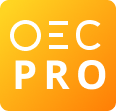South Korea-Zimbabwe Trade: In 2023, South Korea exported $11.8M to Zimbabwe. The main products that South Korea exported to Zimbabwe were Vaccines, blood, antisera, toxins and cultures ($1.99M), Electric Batteries ($1.23M), and Ethylene Polymers ($1.13M). Over the past 5 years the exports of South Korea to Zimbabwe have decreased at an annualized rate of 16.4%, from $29.1M in 2018 to $11.8M in 2023.
In 2023, South Korea did not export any services to Zimbabwe.
Zimbabwe-South Korea Trade: In 2023, Zimbabwe exported $17.9M to South Korea. The main products that Zimbabwe exported to South Korea were Raw Tobacco ($17.9M), Other Pure Vegetable Oils ($941), and Other Mineral ($10). Over the past 5 years the exports of Zimbabwe to South Korea have increased at an annualized rate of 29.5%, from $4.91M in 2018 to $17.9M in 2023.
In 2023, Zimbabwe did not export any services to South Korea.
Comparison: In 2023, South Korea ranked 4 in the Economic Complexity Index (ECI 1.85), and 5 in total exports ($645B). That same year, Zimbabwe ranked 110 in the Economic Complexity Index (ECI -0.98), and 106 in total exports ($9.05B).

